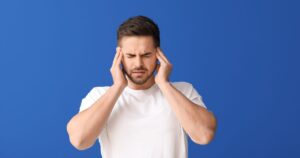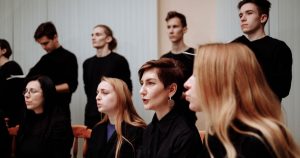New guidance on singing and Covid-19 has been cautiously welcomed but has also prompted calls for more clarity.
For singing teachers keen to return to face-to-face teaching, there have been a few significant developments this month.
Last week, the government published revised guidance that states non-professionals in England can now take part in singing, as long as they follow social distancing rules.
This change was accompanied by news that socially distanced performances can now take place indoors in England.
All this follows a statement from the government on 5 August in response to a parliamentary question about face-to-face teaching. The statement said: “The teaching of singing, woodwind instruments, and brass instruments, including one-to-one instruction, can take place in school and home environments, as long as the relevant guidance is followed.”
(Note: At this point, there is no new guidance for Scotland and Wales. Here is the latest for Northern Ireland, where non-professionals are not yet allowed to engage in singing with other people.)
Reaction
At first glance, the announcements for England seem like a cause for celebration. (Yipee, after a five-month hiatus, we can get back to business!) But as with pretty much everything Covid-related it’s not quite that simple.
While the Incorporated Society of Musicians (ISM) and the Musicians’ Union (MU) have welcomed the changes, both organisations remain circumspect about the current situation and are pushing for more detail.
The ISM has released guidance on private teaching, but it comes with a caution: teachers need to decide the way forward for themselves and take full responsibility for the choices they make.
The crux of the issue is this: there is no one-size-fits-all answer to the question of when it is safe to return to in-person teaching.
The decision will be influenced by what part of the country you live in (some areas are facing renewed lockdown), your age and health (and that of your students) and your feelings about teaching online and in-person.
Assessing the risk
The ISM has published a risk assessment template that may be useful for teachers.
Here are some key issues singing teachers need to consider. It’s by no means a definitive list, but a starting point to kickstart the decision-making process.
Health
· Do you, your family, your students or their families have any underlying health conditions that put them at a higher risk should they contract Covid-19?
Managing lessons
· How will you deal with the start and end of lessons? It’s not ideal to have students or their carers waiting on-site before or during a lesson. Can they wait outside?
· What are the implications if you have young students, and you can’t allow their parents on the premises?
· How will you monitor the health of your students before each lesson? i.e. will you take their temperature?
· How long will your lessons last? Remember, the longer the lesson, the greater the risk of exposure.
· How will you incorporate handwashing into your teaching routine (for you and your students)?
· How will you schedule lessons? Will you leave a gap between lessons so that you can wipe down the space/allow for ventilation?
Where you teach
· Some teaching spaces are light, bright and airy; others are akin to the broom cupboard Harry Potter slept in. How big is your studio? Can you socially distance in it?
· How much kit do you have in your studio? As you’ll most likely be wiping everything down regularly, can you remove some of it to save you time?
· Do you work in a shared space? If so, discuss hygiene measures with colleagues. If you have a landlord, what issues do you need to raise with them?
· What sanitisation measures will you undertake after each lesson? This goes for your teaching space and restrooms. How will you incorporate this extra cleaning into your schedule?
Ventilation
Your teaching space needs to be well ventilated, although defining what that means is another thing. The government guidance talks about having “maximum ventilation”. The ISM says keeping a well-ventilated space is a good risk reduction, while the MU calls for adequate and appropriate ventilation.
This video from the National Association of Teachers of Singing goes into rather more detail (watch around minute 44).
Insurance
Check the fine print of your insurance. Where do you stand with Covid-19? If your insurer says you would be covered, providing you follow government guidelines, what does that mean in practical terms? What kind of paper trail do you need to protect yourself?
The business perspective
Once you’re satisfied that it’s safe to teach, the next question is: what are the business implications?
You’re likely to get through a lot of Mr Muscle, so calculate what costs will you incur by taking these extra measures. Will you pass these costs on to your students?
If you already teach online, consider how successful/sustainable this is. Are your students happy to continue with virtual lessons for the time being, or do they have Zoom fatigue?
Further reading
Statement from the Musicians’ Union




